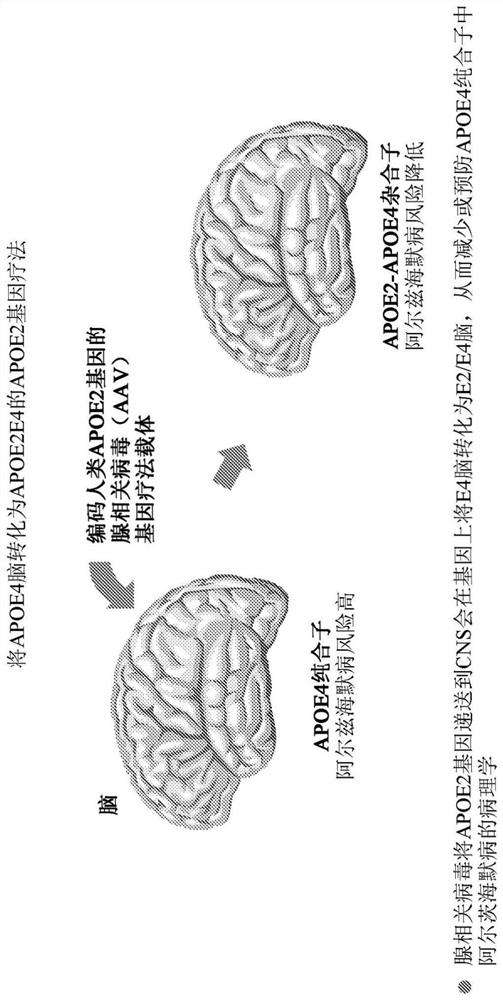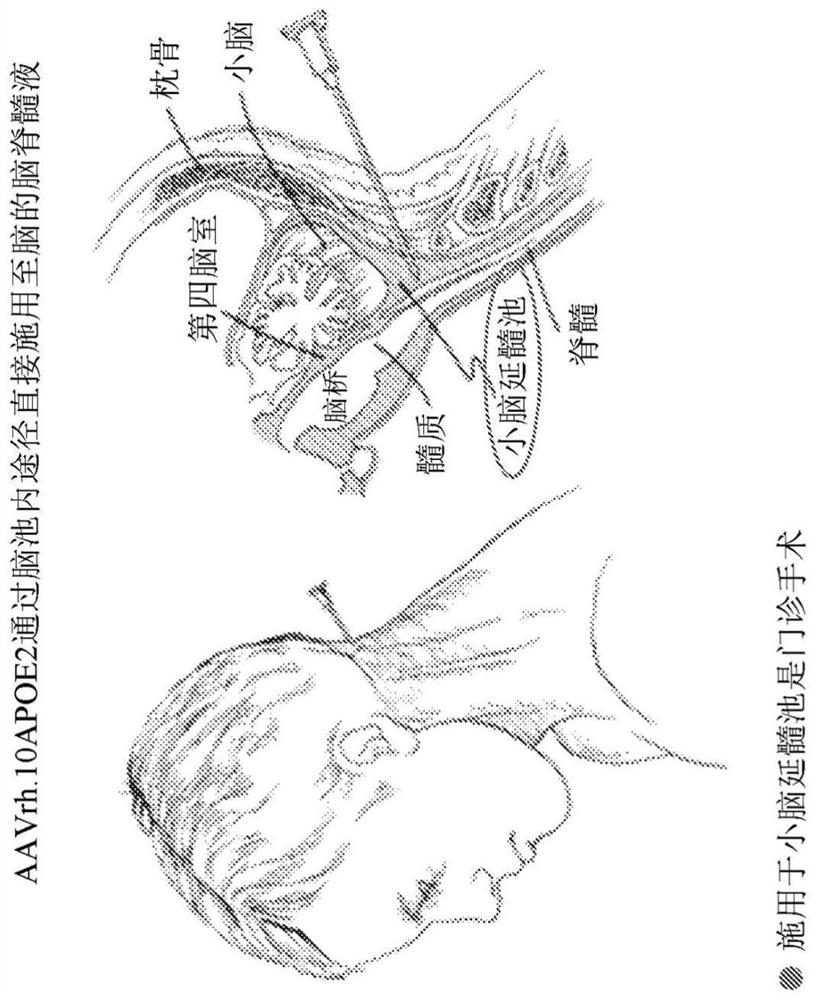APOE gene therapy
A gene therapy, gene therapy technology, applied in the direction of genetic engineering, chemical instruments and methods, single-stranded DNA virus, etc.
- Summary
- Abstract
- Description
- Claims
- Application Information
AI Technical Summary
Problems solved by technology
Method used
Image
Examples
example 1
[0173] Overview
[0174]The pathogenesis of Alzheimer's disease (AD) is complex and characterized by central nervous system (CNS) accumulation of amyloid-beta (Aβ) and amyloid plaques, aberrant tau phosphorylation, tau tangles, inflammation, and neurological Meta-progressive loss, leading to progressive cognitive decline1. Genetics plays a major role in the risk of these pathogenic processes (DeTure & Dickson, 2019; Holtzman et al., 2012; Safieh et al., 2019; Fernandez et al., 2019). Early-onset autosomal dominant AD is caused by mutations in amyloid precursor protein (APP) and presenilin (PSEN) 1 and 2 (Campion et al., 1999; Carmona et al., 2018), the APP and the PSEN 1 and 2 are genes that affect APP processing, altering Aβ peptide production, leading to aggregation and plaque formation (Carmona et al., 2018; Dai et al., 2018). The major genetic factor in sporadic late-onset AD is a variant of apolipoprotein E (APOE), a lipid transporter (Tzioras et al., 2019; Wolters et...
example 2
[0211] Overview
[0212] Alzheimer's disease (AD) is a degenerative brain disease and the most common cause of dementia, currently affecting 5.8 million Americans and 50 million people worldwide. AD symptoms include a progressive decline in cognitive and functional abilities and brain pathology, including extracellular beta-amyloid plaques, intracellular tau tangles, chronic inflammation, and brain atrophy. The strongest genetic risk factor for susceptibility to late-onset AD involves polymorphisms of the apolipoprotein E (APOE) allele. APOE4 is found at high frequencies in AD patients, and homozygous inheritance is associated with a 14.5-fold increased risk of developing AD. Conversely, APOE2 reduced the risk of AD development and delayed the onset of the disease, eg, reduced the risk of developing AD by ≥50% and delayed the age of onset. Based on epidemiological data, APOE4 was associated with increased brain amyloid load and greater memory impairment in AD, whereas APOE...
PUM
 Login to View More
Login to View More Abstract
Description
Claims
Application Information
 Login to View More
Login to View More - R&D
- Intellectual Property
- Life Sciences
- Materials
- Tech Scout
- Unparalleled Data Quality
- Higher Quality Content
- 60% Fewer Hallucinations
Browse by: Latest US Patents, China's latest patents, Technical Efficacy Thesaurus, Application Domain, Technology Topic, Popular Technical Reports.
© 2025 PatSnap. All rights reserved.Legal|Privacy policy|Modern Slavery Act Transparency Statement|Sitemap|About US| Contact US: help@patsnap.com



